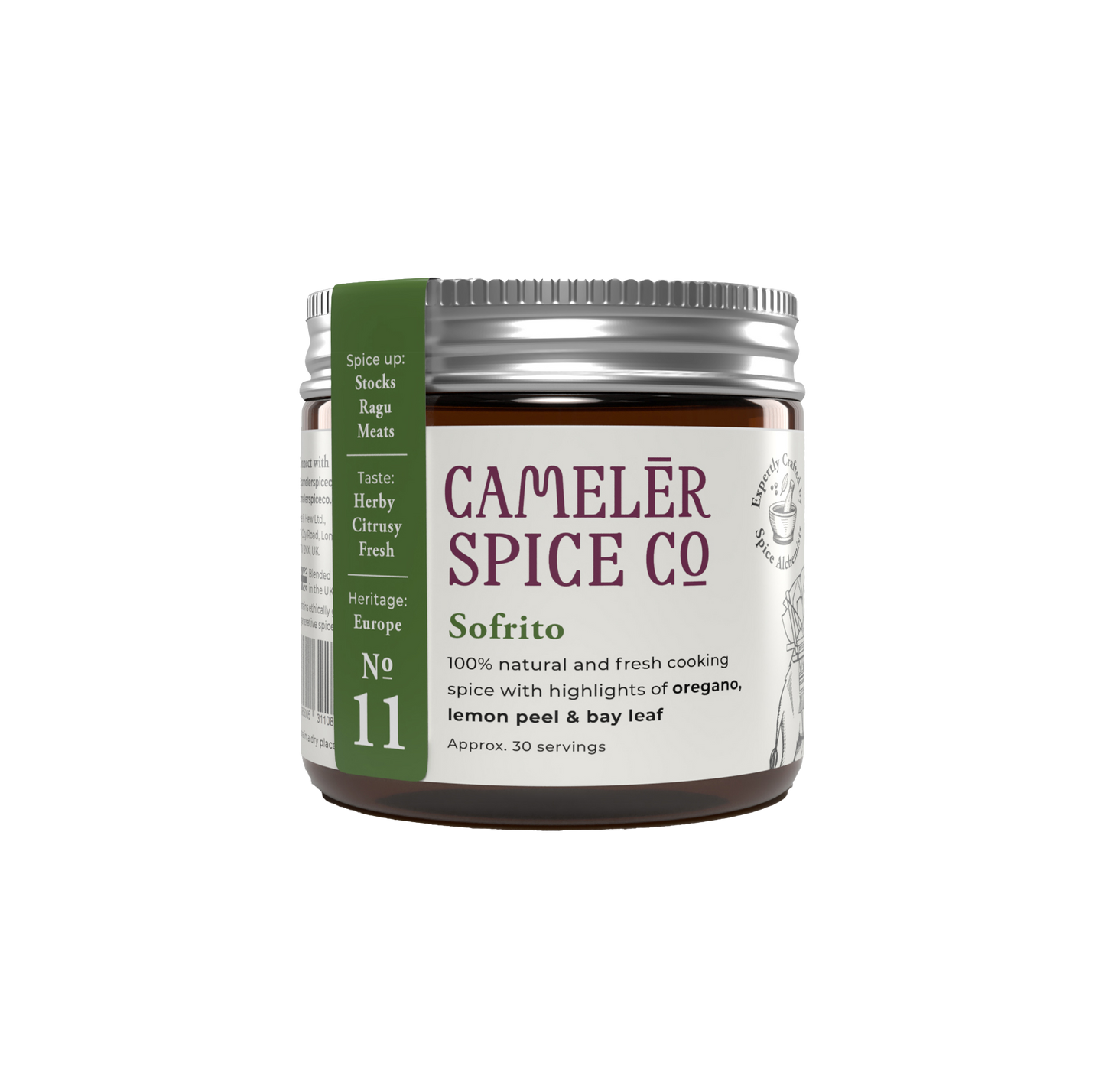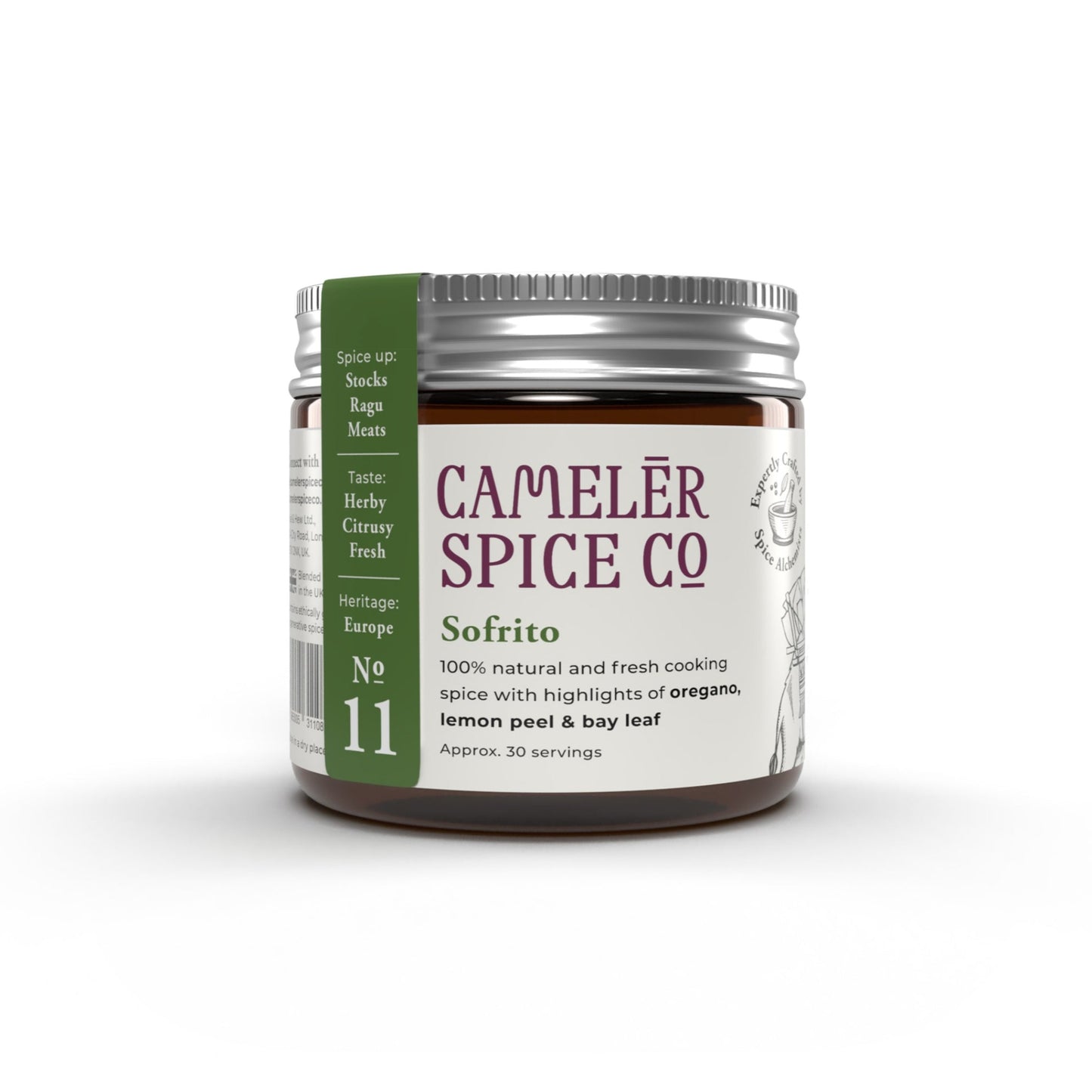Sofrito
Sofrito has its roots in the 14th-century AD Catalan period, with its earliest mention involving onion and oil. From Spain, it spread to Spanish colonies, where variations are still used today. Known as ‘sazón’ in the Dominican Republic, ‘recaíto’ in Puerto Rico and Cuba, and more famously as ‘mirepoix’ in France and ‘suppengrün’ in Germany, it serves as the foundation upon which many recipes are built.
Taste
Perfect For
Scent


Sofrito nutritional facts
For a detailed breakdown of the nutritional values of this product, including calorie content, macronutrients, and other key details, please refer to the attached nutritional information sheet. This information is also available on our jars, with allergens highlighted in bold
Sofrito emissions report
We aim to reduce the amount of carbon dioxide (CO₂) and other greenhouse gases released into the atmosphere by addressing the emissions associated with our products throughout their life cycle






















